
The Hawaiian Islands are eight major islands all surrounded by water. However, the ocean waters surrounding the islands are a different ecosystem than that of the freshwater lakes in the islands’ interiors. Though there are hundreds of streams that flow down the sides of the cliffs and 266 freshwater reservoirs spread out across the islands, there are only five natural lakes in all of Hawaii. Which one of these Hawaiian lakes is the deepest? Did one of the deepest lakes in Hawaii disappear overnight? How is that possible? What is the deepest lake in Hawaii now? Read on to discover everything you need to know about the deepest lake in Hawaii.
What Is the Deepest Lake in Hawaii?
The deepest lake in Hawaii is Halali’i Lake. It is located on the island of Ni’iahu, a forbidden island that requires an invitation to visit. The lake isn’t the deepest all year round, but during the wet season it fills up and becomes the deepest lake in Hawaii. The lake gets to be 841-854 acres during the peak season.
Where Is Halali’i Lake Located on a Map?
The lake is in the south central region of the island of Ni’iahu, which is about 18 miles west of Kauaʻi and 0.7 miles south of the uninhabited island of Lehua. Halali’i Lake is located in Kauai County and close to the smaller lake of Halulu Lake.
Animals That Live Around Halali’i Lake
Halali’i Lake and the surrounding island of Ni’iahu are home to many species of familiar farm animals such as cows, sheep and pigs, as well as more exotic creatures such as oryx, aoudad, and eland. Since Halali’i is partially dry for part of the year, fish and other aquatic creatures are not a common sight here. The lake still provides a vital resource for livestock as one of very few naturally occurring freshwater springs in Hawaii.
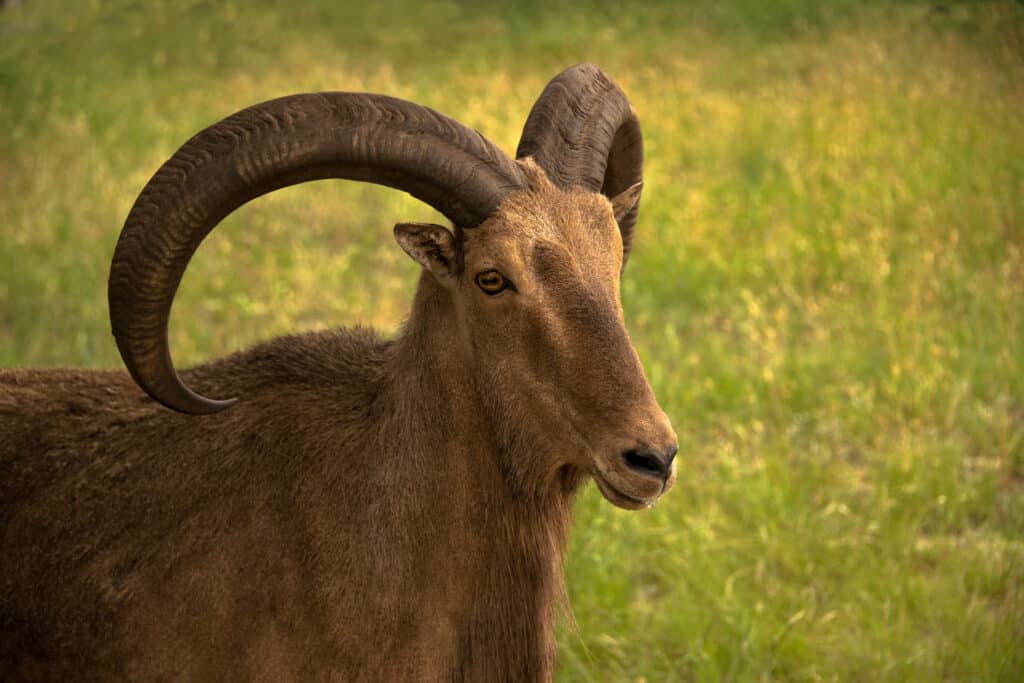
Aoudad sheep can occasionally be found drinking from the waters of the Hallali.
©iStock.com/WestwindPhoto
Why Doesn’t Hawaii Have Very Many Lakes?
There are only five natural lakes in Hawaii and 266 man-made reservoirs to harness the freshwater on the islands. The landscape and climate on the islands are the reason for so few lakes. Much of the landscape is volcanoes and mountains, which when combined with the hot climate may contribute to the limited number of lakes. In fact, some lakes have almost completely dried up creating a puzzling situation for scientists.
What Happened to the Deepest Lake in Hawaii?

Green Lake in Hawaii was destroyed by an erupting volcano.
©Hawaiʻi State Archives Digital Collections PP-30-6-027/Public Domain – License
The deepest lake in Hawaii used to be Green Lake (also known as Ka Wai a Pele). Green Lake was a 200 foot deep lake on the main island of Hawaii, one of only two freshwater lakes on the island. There are more volcanoes than freshwater lakes in Hawaii. One of the most active volcanoes is Kilauea and back in 2018 things were simmering for a great eruption. Activity in the volcano started brewing in March and on May 3, 2018, a fissure of the eruption started in a nearby neighborhood. The next day a 6.9 magnitude earthquake hit the island. Hot molten lava began filling the landscape, destroying homes, roads, and buildings along the way.
On June 2, 2018, the hot lava reached the edge of Green Lake. Green Lake was 25 miles from the Kilauea volcano. The lava reached the edge of Green Lake at 10:00 am. The U.S. Geological Society posted a message about the lava beginning to boil and evaporate the water in the lake. By 3:00 pm that same day, just five hours later, the lake had evaporated completely!
How Long Did the Kilauea Eruption of 2018 Last?
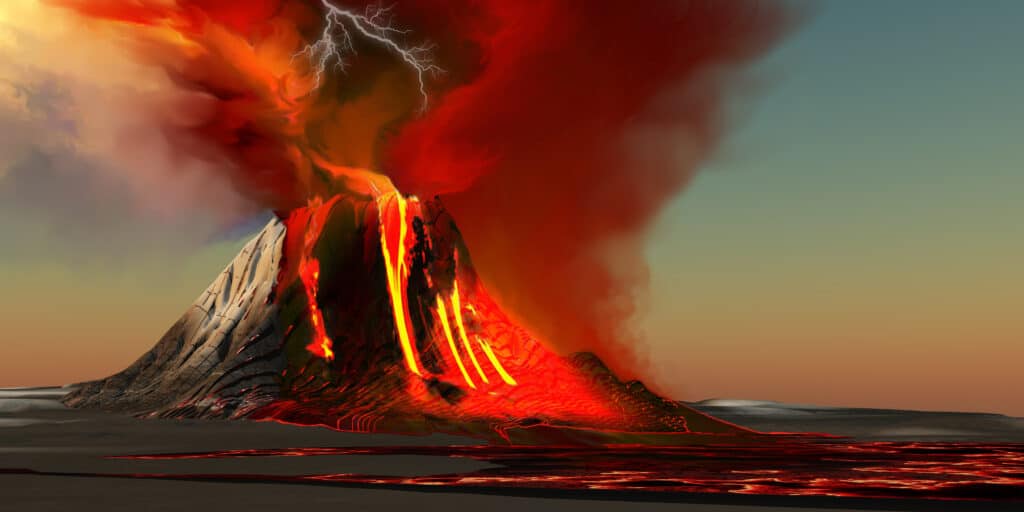
The Kilauea Volcano in Hawaii erupted in 2018.
©Catmando/Shutterstock.com
The Kilauea eruption lasted until September of 2018. After wiping out Green Lake it went on to empty into the ocean. The USGS posted videos of the hot lava pouring into the cool ocean creating massive plummets of steam into the air.
What Was the Damage From the Kilauea Eruption of 2018?
Not only did the eruption destroy Green Lake completely, but it devastated 700 homes. 2,000 people had to find new places to live. The eruption destroyed a total of 13.7 square miles. The series of summit collapses made the crater at the top of the volcano larger and larger with each collapse. By the end of September, the crater went from being 280 feet deep to 1,600 feet deep.
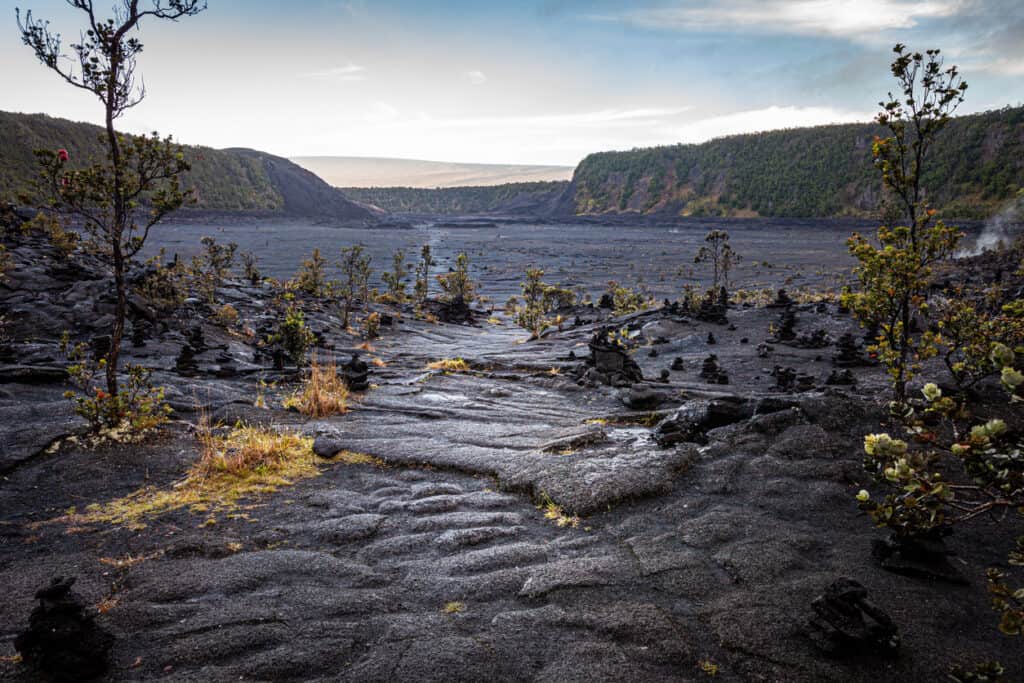
Volcanic ash and lava from the Kilauea eruption of 2018 completely evaporated Green Lake.
©iStock.com/VezzaniPhotography
What Is the Mystery Lake That Is on the Big Island in Hawaii?
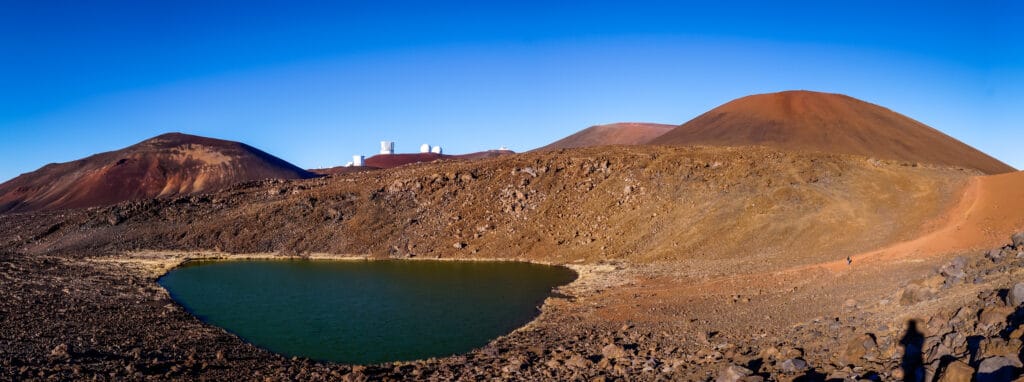
Lake Waiau never disappeared completely and by 2014 it started to fill in again after a few big storms.
©Julian Peters Photography/Shutterstock.com
The mystery behind the only alpine lake left on the Big Island dates back in 2010. Lake Waiau, which is just below the summit of the Maunakea volcano in north central Hawaii, started to shrink and almost disappeared. In 2010 the lake was 100 meters wide and 10 feet deep. Over the next three years it gradually dwindled. Scientists were baffled as to why the lake was receding. By September of 2013, the lake was just 16 yards wide (just 48 feet) and about a foot deep! NASA satellite photos show the huge contrast between the lake sizes over the years.
The lake never disappeared completely and by 2014 it started to fill in again after a few big storms. By 2018, it was back to its original size and depth, just as Green Lake evaporated. Now Waiau is the only freshwater lake on Big Island.
Is the Deepest Lake in the U.S. in a Volcano?
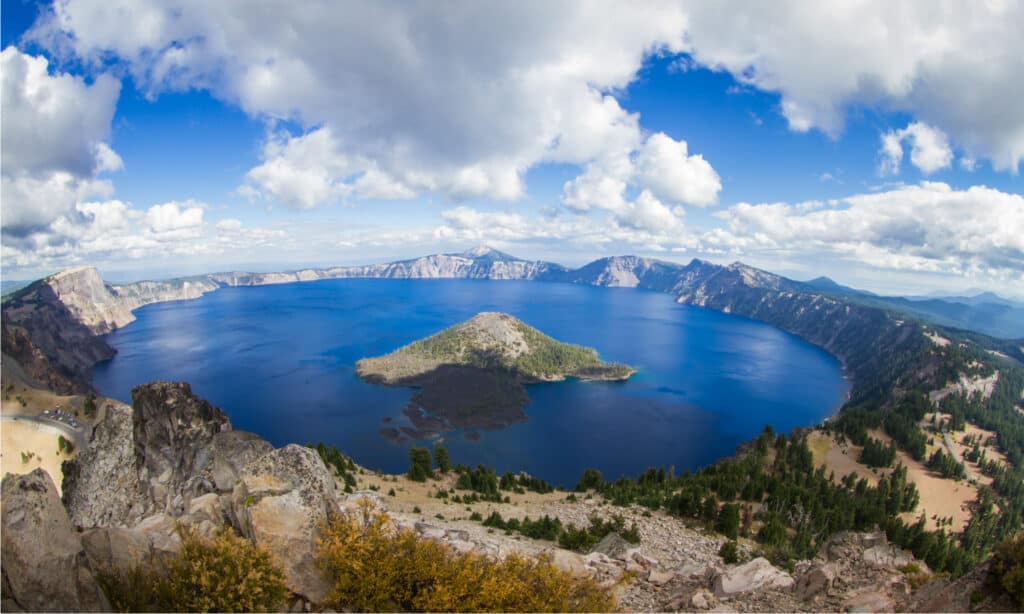
Crater Lake is considered a dormant volcano now; it is not an active volcano like Kilauea.
©Wollertz/Shutterstock.com
The deepest lake in the US is Crater Lake in Oregon, which sits in the crater left behind from the eruption of Mount Mazama. This is not a recent eruption; scientists estimate it occurred around 7,700 years ago. Crater Lake is considered a dormant volcano now; it is not an active volcano like Kilauea. Crater Lake does not have any inlet streams or waterways. It is completely contained, and all the water comes from either rain or snow.
How Deep Is the Deepest Lake in the U.S.?
The deepest lake in the US is 1,943 feet deep at its deepest point. Crater Lake is located in southcentral Oregon in the Cascade Mountains. The National Park Service Manages Crater Lake National Park.
Are There Any Fish in Crater Lake?
There are two species of fish that were stocked in Crater Lake. Both lake trout and kokanee salmon are present in Crater Lake. They enjoy the clear cool waters but don’t go as far down as 1,943 feet deep. You can go fishing in Crater Lake but be sure to use artificial, non-organic lures. The National Park Service is trying to keep all invasive species out of the lake to maintain its integrity and to keep its natural ecosystem. Perhaps someday Green Lake will fill in again and become the deepest lake in Hawaii, but it won’t come even close to the depths of Crater Lake!
The photo featured at the top of this post is © mhgstan/Shutterstock.com
Sources
- nps.gov, Available here: https://www.nps.gov/havo/learn/nature/2018-eruption.htm
- Fox News, Available here: https://www.foxnews.com/science/hawaii-volcano-kilauea-lava-boiled-away-big-islands-largest-freshwater-lake
- Hawaii News Now, Available here: https://www.hawaiinewsnow.com/story/38346982/where-pele-first-visited-residents-react-to-the-loss-of-a-400-year-old-lake-due-to-lava/
- nps.gov, Available here: https://www.nps.gov/crla/planyourvisit/fishing.htm
Thank you for reading! Have some feedback for us? Contact the AZ Animals editorial team.







